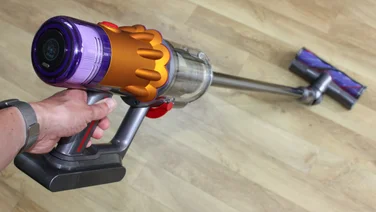To help us provide you with free impartial advice, we may earn a commission if you buy through links on our site. Learn more

Mould on walls is unsightly at best, but, at worst, it’s a sign that there are structural or damp issues in your home that urgently need to be addressed. However, for most of us, a bit of mould in the bathroom is a common complaint, and it’s often thanks to too much moisture in the air coupled with poor ventilation – things that are easy to rectify.
It’s important not to ignore mould on walls though – according to the NHS, moulds produce allergens which can lead to asthma attacks, sneezing, rashes and eye irritations. Or worse, as living in damp, poorly ventilated rooms can cause other health concerns such as respiratory problems or infections.
If you’ve spotted ugly mould patches appearing on your walls, we’ve got the info you need on how to tackle what’s there, and the steps you can take to make sure it’s gone for good.
READ NEXT: Best dehumidifiers tried and tested to banish damp and mould
What causes mould on walls?

Essentially, mould grows in damp conditions and this moisture can build up as a result of activity inside your home. We’re all familiar with the steam and condensation caused by a long, hot shower, but if you’ve got a powerful bathroom extractor fan, and you open windows frequently, this usually dissipates. However, for bathrooms with poor ventilation or those lacking a window, excess moisture can quickly become problematic.
Similarly in kitchens, moisture from cooking – such as boiling pans on the hob – can quickly build up in the air. And if it doesn’t have anywhere to go it can settle on cold walls, making them damp which can lead to mould growth. And, while it should come as no surprise that bathrooms and kitchens are prime sources of moisture, you might not have considered one of the hidden causes of damp in our homes that is so often overlooked: drying laundry. The water from the freshly-washed clothes drying on your airer or radiators has to go somewhere, but in the depths of winter, when all your windows are closed, it can build up in the air causing condensation on the walls and, before you know it, a mould problem.

These indoor sources of moisture are relatively simple to solve, but outdoor moisture can also make its way into our homes, causing damp on internal walls. And in these instances you’ll need a few DIY skills, or a tradesperson, to help fix the issue. Common external sources of damp are leaks from gutters and downpipes, roof tiles, or plumbing, but there are many other potential causes and, if it’s not obvious, you might need to seek expert help in getting to the root of the problem.
READ NEXT: Improve the air quality in your home with our pick of the best air purifiers
How to remove mould on walls
Washing walls is the best way to remove visible mould growth. And, while there are plenty of mould remover sprays you can buy, a solution of one part bleach to three parts water makes an effective mould killer. Make sure you wear rubber gloves and, if possible, use a stiff brush to dislodge all the mould from any fine cracks or pitted areas of the paintwork.
For a more environmentally friendly approach, white vinegar will do the trick. Simply spray it neat onto the area, and allow it to work its magic for at least 20 minutes, before scrubbing and rinsing off.
However you choose to treat the mould, be vigilant – rinse and repeat to ensure you’ve removed all the spores and always leave the wall as dry as possible.
Depending on the paint surface, black mould can sometimes stain walls and/or your scrubbing may have damaged the paint. If you do need to repaint the area, we’d advise waiting a few weeks to check the mould is definitely gone so you’re not just painting over the problem.
How to make sure it’s banished for good
It’s worth paying a bit extra for specific kitchen paint or bathroom paint when painting, or repainting, these steamy rooms. Look for one that’s moisture-resistant and has mildew inhibitors or mould-resistant properties. In these high moisture areas, using the proper paint on walls can help avoid mould issues and, if you do have to tackle any mould growth in the future, they are far more scrubbable than ordinary emulsion.
Houses need to breathe – we cannot emphasise this enough – so open those windows, even in winter! You don’t need to let the house get cold, but make the most of the warmest part of the day and crack a few windows to get air flowing through. Ventilation is key to removing moisture and helping your home stay dry and free of mould. Make sure bathroom and kitchen extractors are fully functioning, and always switched on when you’re showering or cooking. Never be tempted to tape over draughty extractor fans – instead replace them with a more efficient model.


When drying clothes indoors, put your airer next to an open window, if possible. Alternatively, consider setting up a dehumidifier nearby to remove excess moisture from the air as the clothes dry.
You may need to get up into the loft and address the insulation situation – if it’s patchy, it could be causing cold spots where condensation will accumulate on the ceilings below. And, of course, you’ll need to address any potential external sources of damp – clear out and inspect gutters regularly, and be vigilant for any slipped roof tiles or signs of water damage on the outside of your house.








